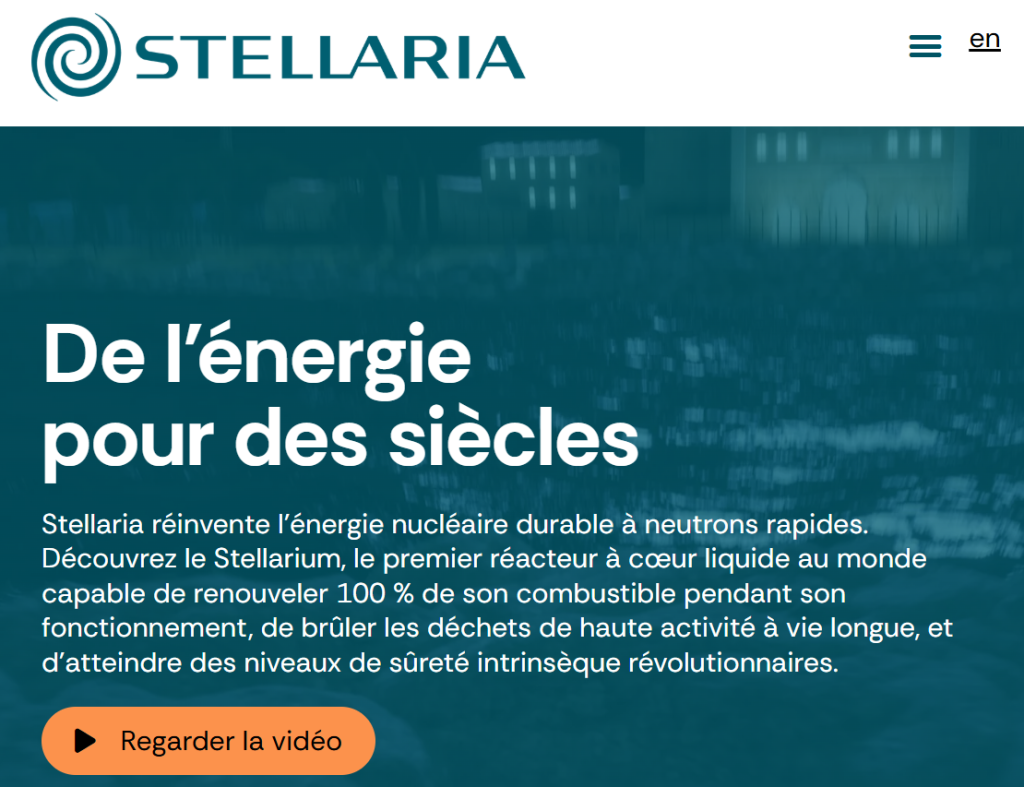Stellaria Raises $23M to Tackle Industrial Decarbonization with Thermo-Photovoltaics
August 5, 2025
byFenoms Start-Ups

In a major step forward for clean industrial energy, Stellaria has announced a $23 million funding round, led by At One Ventures, with participation from Supernova Invest, CEA Investissements, Schneider Electric, Exergon, and Technip Energies. Founded by Nicolas Breyton, Stellaria is positioning itself at the forefront of industrial decarbonization through a novel thermo-photovoltaic (TPV) platform that transforms ultra-high temperature heat into electricity with zero emissions.
Industrial heat accounts for nearly a quarter of global energy demand, and most of it still comes from fossil fuels. Stellaria aims to rewrite that equation by developing compact TPV systems that can deliver clean, dispatchable electricity and heat to even the most energy-intensive sectors.
Engineering the Future of Clean Heat
At the core of Stellaria's technology is a highly efficient TPV cell system - an approach that converts thermal radiation from high-temperature sources directly into electricity, much like how a solar cell harvests sunlight. Unlike traditional photovoltaics, TPV thrives in extreme heat, making it ideal for heavy industry applications where decarbonizing heat has been nearly impossible.
Stellaria’s units are designed to reach temperatures of 1500°C and beyond, capturing radiant energy from concentrated sources (like renewable hydrogen combustion or electric arc furnaces) and converting it into electricity with very high efficiency.
This is not just a moonshot - it’s engineering built on decades of physics, combined with real-world deployability. The company has already demonstrated lab prototypes exceeding 40% efficiency, and is now focused on scaling for manufacturing, durability, and system integration in actual industrial facilities.
From Deep Tech to Deployable Systems
What sets Stellaria apart isn’t just the tech. It’s the go-to-market clarity. While many deep tech startups fumble when translating research to revenue, Stellaria is sharply focused on industrial partnerships.
And here’s a crucial insight that more founders need to absorb: if you're building tech that replaces entrenched systems, you have to solve not just the technical performance - but the switching friction.
Stellaria bakes in compatibility from day one. Its TPV modules are designed to plug into existing industrial infrastructure. Whether retrofitting a steel plant or powering cement kilns, Stellaria’s platform reduces operational change resistance, turning potential blockers into adoption accelerants.
In practical terms, this means:
- Modularity that supports step-by-step integration
- Heat-to-power conversion that aligns with plant demand cycles
- Emissions tracking built into the core architecture
The approach isn’t just hardware - it’s systems thinking. And that’s why the investors piling in aren’t just betting on kilowatts; they’re betting on deployment velocity.
A Climate-Smart Investor Stack
The investor lineup says it all:
- At One Ventures, a climate-focused firm co-founded by GoogleX’s Tom Chi, is known for backing regenerative industrial technologies
- Supernova Invest and CEA Investissements bring deep roots in advanced energy tech and French industrial ecosystems
- Schneider Electric and Technip Energies are not just backers - they’re prospective deployment partners, with operational footprints across heavy manufacturing and energy infrastructure
- Exergon adds complementary expertise in energy systems and sustainability
With this group, Stellaria gains not only capital, but a validation loop that shortens the gap between product-market fit and scaled impact.
The Heat-Electricity Crossover Opportunity
Industrial heat has long been the last frontier of decarbonization. While solar, wind, and battery storage have seen explosive adoption in the grid, industrial thermal systems remain hard to abate due to the intensity, continuity, and customization of energy demand.
Thermo-photovoltaics offer a powerful crossover point. They can convert waste heat into usable power. They can create hybrid systems that pair renewable thermal sources with electric output. And perhaps most intriguingly, they open up the door for closed-loop zero-emission cycles when paired with green hydrogen or biofuels.
According to the IEA, industrial process heat represents over 74% of total industrial energy use, and over 90% of that heat is still fossil-powered. The decarbonization delta is massive - and underserved.
The thermo-photovoltaic market is expected to exceed $3.2 billion by 2032, driven by policy pressure, climate mandates, and operational cost efficiencies.
Stellaria is emerging as a category creator in this space.
What's Next for Stellaria
With the fresh $23 million in funding, Stellaria plans to:
- Scale manufacturing of its TPV cell arrays
- Establish field pilot programs with major industrial partners
- Expand its R&D in cell materials and photonic filters
- Accelerate its go-to-market team for strategic deployments in Europe and North America
The company also intends to double down on recruitment, pulling in talent across materials science, thermal systems, industrial engineering, and AI-driven energy modeling.
Stellaria’s roadmap is ambitious - but it’s grounded. By positioning itself as both a deep tech innovator and an infrastructure-ready solution provider, the company is threading the needle between breakthrough potential and enterprise-grade reliability.
In the increasingly crowded climate tech space, the winners won’t just be those with patents and pitch decks - it will be the ones with pilot data, process integration, and procurement playbooks.
Stellaria seems to understand that. And with this raise, they’re on the path not just to build clean heat systems - but to become the operating layer for decarbonized industry.









